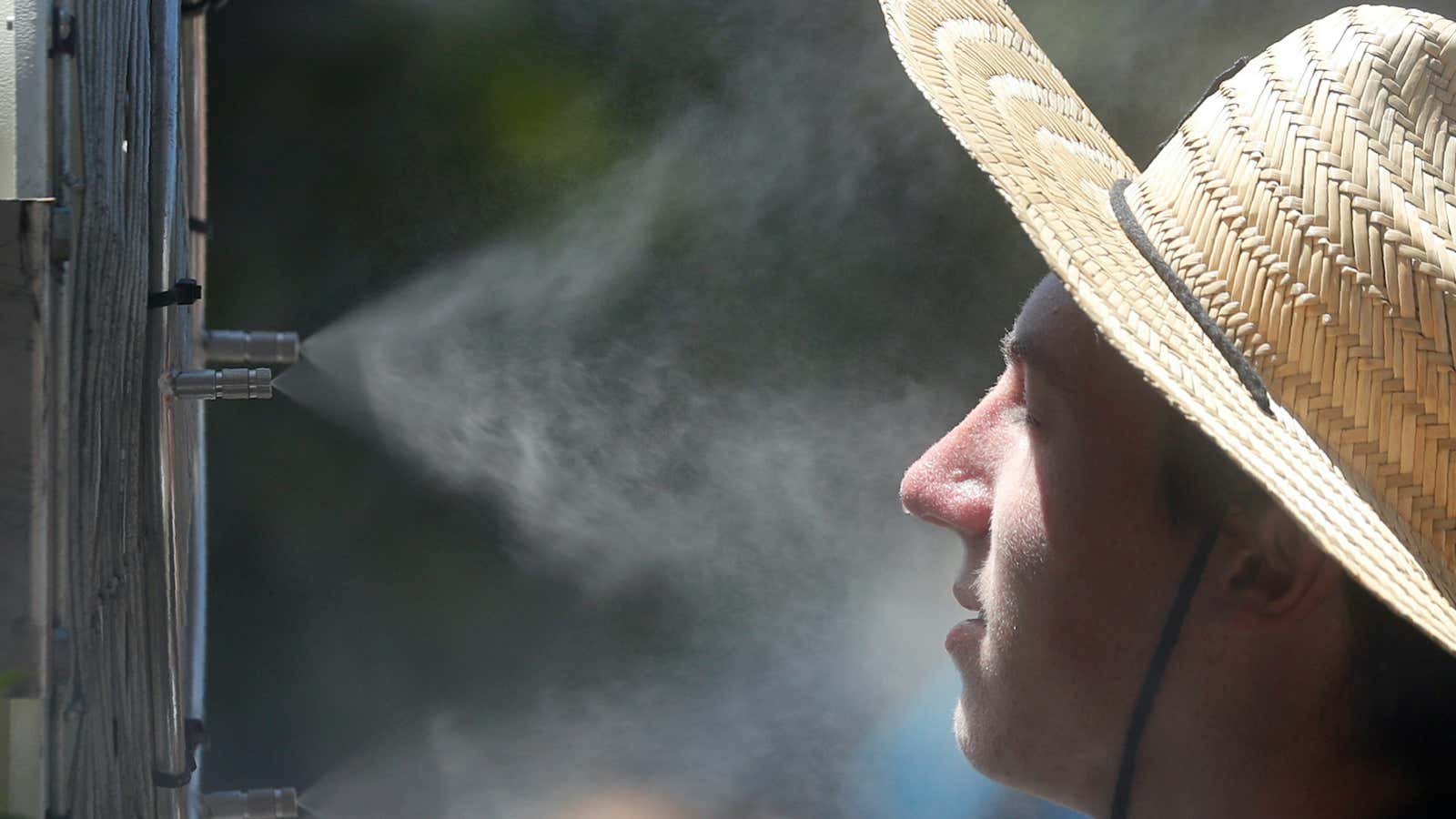This past May, workers at a Dollar General store in Apache, Oklahoma, were faced with the prospect of being stuck inside with no air conditioning. The forecast that day was above 100°F, and the temperature in the store had reached 85°F. So they quit.
“We have customers who won’t come in because it’s too hot for them,” the store’s assistant manager Rachel Minchow told local paper The Lawton Constitution. Employees had been submitting requests for the air conditioning to be fixed for close to two months, she said. “Customers complain that candy is melted. Every day, even if I’m just standing still, checking people out, I’m pouring sweat. That shouldn’t happen.”
The Dollar General employees went on to find work elsewhere. But as a broader issue, the risks of working in extreme heat are increasingly pressing as climate change sends temperatures in many parts of the world soaring. The problem impacts both people who work outdoors, such as agriculture and construction workers, and those who work in stores and factories with insufficient cooling systems.
As the US Labor Department places fresh emphasis on protecting workers (pdf) from heat-related health hazards and temperatures reach record highs in many parts of Europe and the US, it’s time for a global conversation about the intersection between climate controls and workers’ rights.
How extreme heat puts workers at risk
When temperatures climb, workers may face health problems ranging from heat stroke to exhaustion, dizziness, and higher risk of injuries. During the heat wave that rippled through the US Pacific Northwest last summer, a number of workers died on the job, including a farmworker out in the fields in 104°F heat, a Walmart distribution center worker, and a construction worker. (Two businesses were fined by Oregon state regulators for failing to take appropriate precautions against the heat.) Nationwide, the US Department of Labor’s Occupational Safety and Health Administration (OSHA) estimates that workers suffer from at least 3,500 heat-related injuries and illnesses each year.
Citing the rising incidence of extreme heat in the wake of climate change, OSHA recently introduced a new program (pdf) aimed at strengthening worker protections. The program is intended to encourage employers to provide workers with shade, water, and resting areas in order to recover from high temperatures. The agency will also begin conducting inspections of workplaces in high-risk industries on days where there are heat warnings or advisories.
Within the US, states including Washington and California have introduced heat regulations for workers that require employers to offer access to water, shade, and rest breaks when temperatures reach certain thresholds.
Other countries have protections in place that go even further. Germany and Spain, for example, mandate that temperatures in indoor workplaces not exceed 79°F and 81°F, respectively. Some countries in the Middle East bar employers from asking people to perform outdoor labor during the hottest periods of the day.
Workers’ rights in the age of climate change
Absent further regulations, some US companies are independently getting ahead of concerns about workers’ safety and comfort on hot days. When factory workers told private-equity firm KKR, which owns the company CHI Overhead Doors, that they needed air conditioning, the firm complied. “The next summer, there were fewer injuries and, by the way, the quality [of work] is higher,” a KKR executive told Bloomberg recently. “It’s about listening to employees.”
But as fears of a recession loom, there’s also a risk that some companies may cut back on air conditioning as a belt-tightening measure. Bed Bath & Beyond, for example, is reportedly turning down the air-conditioning in its stores in an effort to save money.
There’s a difference, of course, between a slightly-less-chilly-than-ideal work environment and conditions that are not just deeply uncomfortable but potentially harmful for employees. And it’s worth noting that there’s a gender divide when it comes to preferable indoor temperatures, with many workplaces still setting the thermostat to cooler temperatures based on the needs of men’s bodies.
What is clear is that, with the last seven years the hottest in recorded history, responsible employers need to start thinking now about the accommodations and modifications that will help people do their jobs safely. “Heat is not just an inconvenience,” Teniope Adewumi-Gunn, a climate change and worker health science fellow at the environmental nonprofit Natural Resources Defense Council, told the Washington Post last year. “It kills people.”
